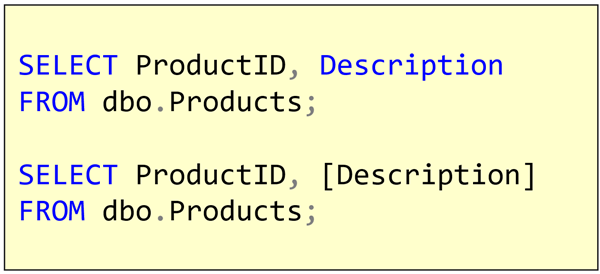T-SQL 101: 14 Using two part names for SQL Server tables and other objects
If you look carefully at the following simple query:

you’ll notice that I didn’t just say FROM Cinemas, I said FROM dbo.Cinemas. The “dbo.” part is the name of the schema. I talked about schemas in an earlier post. And all through these T-SQL 101 blog posts, I keep mentioning that you should always use the schema name as well as the object name.
By why?
[caption id=“attachment_2806” align=“alignnone” width=“312”] Image by Ken Treloar[/caption]
Image by Ken Treloar[/caption]
2019-04-22

 Awesome image by Jens Johnsson[/caption]
Awesome image by Jens Johnsson[/caption]

